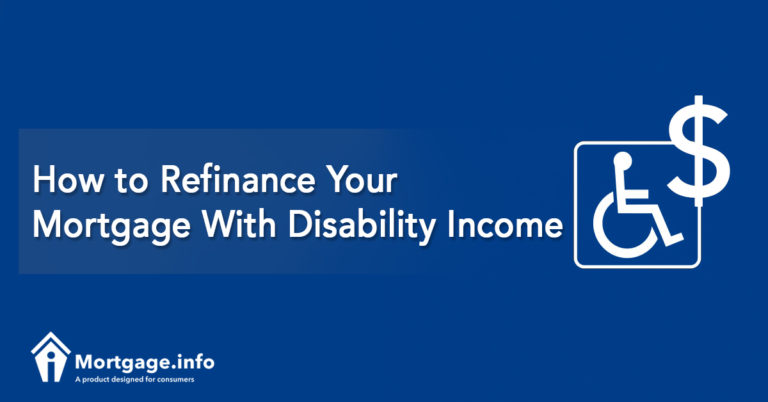When you take out a mortgage, you’re committing to making regular payments for years or even decades. However, life can throw unexpected curveballs, and a disability due to illness or injury can leave you unable to work and struggling to keep up with your mortgage payments. This is where mortgage disability insurance comes in – it acts as a safety net, ensuring that your mortgage is covered when you can’t earn an income.
What is Mortgage Disability Insurance?
Mortgage disability insurance is a specialized type of insurance that covers your ongoing mortgage payments for a specified period if you become disabled and unable to work. It’s typically purchased alongside mortgage life insurance, which pays off the remaining balance of your mortgage in the event of your death.
Here’s how it works: If you become disabled due to an illness or injury that prevents you from performing the duties of your occupation, your mortgage disability insurance policy will kick in after a waiting period, typically 30 to 60 days. It will then cover your monthly mortgage payments, including principal, interest, and sometimes additional costs like property taxes and homeowners’ association fees, until you recover and return to work or until the policy’s benefit period ends.
How Does Mortgage Disability Insurance Work?
Let’s illustrate with an example:
Patricia, a marketing executive, recently purchased a new home and took out a mortgage. Concerned about her ability to make payments if she became disabled, she decided to secure mortgage disability insurance from her lender.
A few years later, Patricia was involved in a car accident and suffered severe injuries that prevented her from working for nine months. After the 60-day waiting period, her mortgage disability insurance policy kicked in and began covering her $2,500 monthly mortgage payment. This allowed Patricia to focus on her recovery without the added stress of missing mortgage payments or risking foreclosure.
Benefit Period and Maximum Coverage
The benefit period for mortgage disability insurance policies typically ranges from 12 to 24 months, though some policies may offer longer or shorter durations. During this period, your monthly mortgage payments will be covered up to a specified maximum benefit amount, usually between $3,000 and $3,500 per month.
It’s important to note that once the benefit period ends, even if you’re still unable to work, the coverage will stop, and you’ll need to resume making mortgage payments or explore other options.
Cost and Eligibility
The cost of mortgage disability insurance is determined by factors such as your age at the time of application and the amount of your regular mortgage payment. Policies are typically offered at group rates through your lender, making them more affordable than individually underwritten coverage.
Eligibility requirements vary by provider, but most policies are available to Canadian residents between the ages of 18 and 64 who work at least 20 hours per week for wages or the expectation of profit. You’ll usually need to answer a few health-related questions during the application process, but approval is generally more lenient than for individual disability insurance policies.
Is Mortgage Disability Insurance Worth It?
While mortgage disability insurance offers valuable protection, it’s important to weigh the pros and cons to determine if it’s the right choice for you.
Pros:
- Provides peace of mind knowing your mortgage payments are covered if you become disabled.
- More lenient underwriting requirements than individual disability insurance policies.
- Affordable group rates through your lender.
Cons:
- Limited coverage period, typically 12 to 24 months.
- Benefits are paid directly to your lender, not to you.
- Coverage decreases as your mortgage balance decreases.
For many homeowners, mortgage disability insurance can be a worthwhile investment, especially if you have a high-risk occupation, pre-existing health conditions, or limited savings to cover mortgage payments during a disability.
However, it’s also worth considering a traditional long-term disability insurance policy, which provides more comprehensive coverage and pays benefits directly to you, allowing you to use them for any necessary expenses, not just your mortgage.
Where to Get Mortgage Disability Insurance
Most major banks and credit unions in Canada offer mortgage disability insurance as part of their lending products. CAFII (Canadian Association of Financial Institutions in Insurance) member institutions are a good place to start, as their employees are trained and knowledgeable about these products.
When shopping for mortgage disability insurance, be sure to carefully review the policy details, including the benefit period, maximum monthly benefit, waiting period, and any exclusions or limitations. It’s also a good idea to compare quotes from multiple providers to ensure you’re getting the best coverage at a fair price.
Conclusion
Mortgage disability insurance can be a valuable safety net for homeowners, providing peace of mind and financial protection in the event of an unexpected disability. By covering your mortgage payments during a temporary inability to work, it can help you avoid foreclosure and keep a roof over your head during a challenging time.
While not a substitute for comprehensive long-term disability insurance, mortgage disability insurance can be a worthwhile investment, especially when combined with other forms of protection like mortgage life insurance and critical illness insurance. By understanding how it works and weighing the pros and cons, you can make an informed decision about whether it’s the right choice for your unique circumstances.

